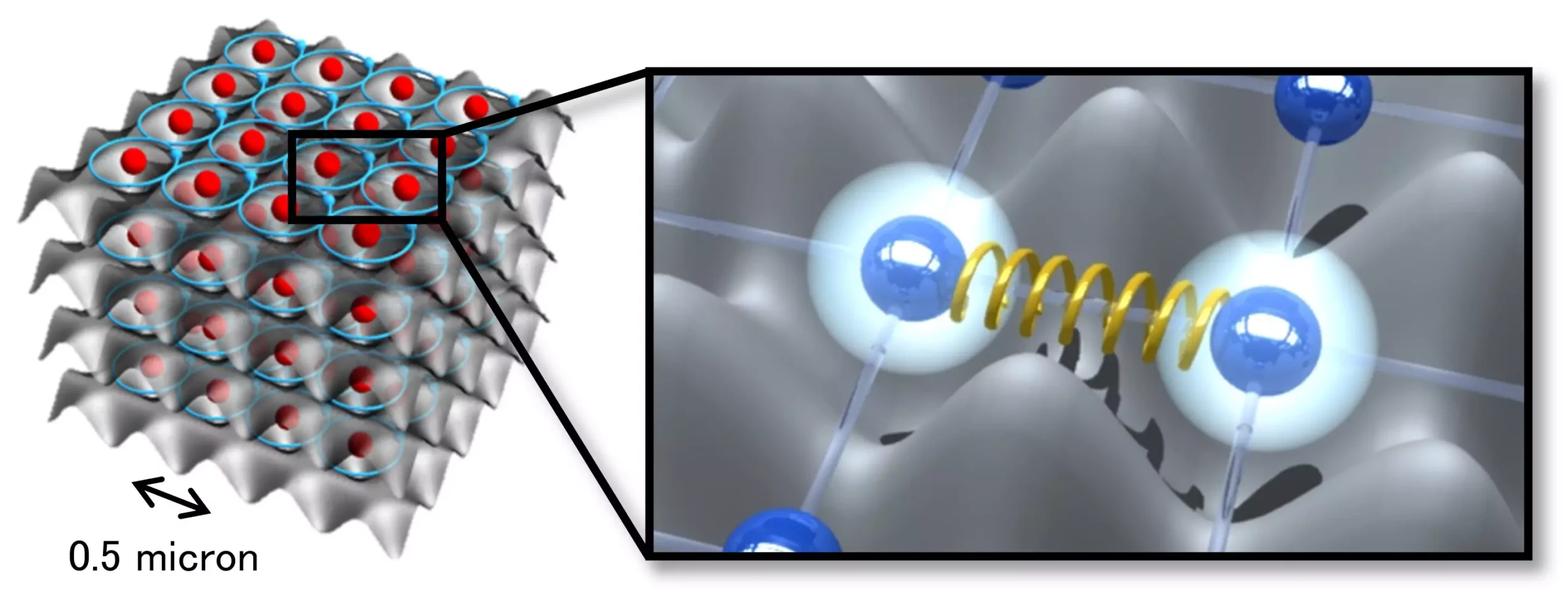Quantum entanglement, a cornerstone of quantum mechanics, describes a phenomenon where the quantum states of two or more particles become interconnected in ways that the state of one cannot be fully described without the state of the other, regardless of the distance separating them. This peculiar behavior is not just a theoretical curiosity; it has profound implications for emerging technologies, particularly in quantum computing, simulation, and sensing. Recently, researchers from the Institute for Molecular Science have made significant strides in this field, showcasing how entanglement between electronic and motional states can be achieved using Rydberg atoms in ultrafast quantum simulators.
Rydberg atoms, characterized by their highly excited electronic states, exhibit giant atomic orbitals that make them particularly useful in studying quantum phenomena. Their interactions, governed by strong repulsive forces, allow researchers to probe the nuances of quantum states effectively. In the recent study published in *Physical Review Letters* on August 30, the researchers delve into the intricate dynamics of quantum entanglement, focusing on the correlation between the electronic states of Rydberg atoms and their motional states.
By employing cold atoms captured within optical traps, the researchers created a carefully arranged optical lattice with a spacing of merely 0.5 microns. The process began with cooling approximately 300,000 Rubidium atoms to a frigid temperature of 100 nanokelvin, using advanced laser cooling techniques. This meticulous preparation set the stage for generating quantum superpositions between stable ground states and the extraordinary Rydberg states, achieved through a mere 10 picosecond ultrashort pulse of laser light.
A notable barrier in Rydberg atom experiments is the Rydberg blockade effect, where the presence of one Rydberg atom inhibits nearby atoms from attaining the same excited state due to the strong repulsive forces. Previous studies found that this blockade limited the experimental configuration to distances around 5 microns. However, the innovative use of ultrafast excitation allowed the researchers to circumvent this limitation, enabling measurements that would have been previously impractical.
This breakthrough led to the observation of rapid quantum entanglement formation—within nanoseconds—between the atoms’ electronic states and their motional motions. Such rapid entanglement dynamics underscore the unique capabilities of their experimental setup and point to a deeper understanding of particle interactions at quantum scales.
The implications of this research extend beyond mere observation; the authors propose a new quantum simulation methodology that incorporates the repulsive forces between atomically excited particles, potentially revolutionizing how future quantum simulations are designed. By exploiting ultrafast laser technology to control repulsive forces in nanoseconds, researchers can dynamically manage the interactions between trapped atoms, thereby enhancing the fidelity and scope of quantum simulations.
This novel approach not only opens avenues for studying fundamental quantum interactions but may also lead to significant advancements in material science by simulating electron behavior in various materials under controlled conditions. The ability to manipulate inter-atomic forces in real-time stands to impact diverse fields, from quantum chemistry to the development of novel quantum materials.
The larger context of this research highlights a pressing need within the quantum computing realm to improve the fidelity of two-qubit gate operations. The relationship between electronic and motional states is critical; understanding and enhancing this interaction could lead to more reliable quantum computations. By employing Rydberg states to refine gate operations, the researchers aim to mitigate the fidelity issues stemmed from atomic motion, accelerating operations and advancing practical applications of quantum computers.
The implications for society are immense, as breakthroughs in quantum computing could redefine information processing, security, and data analysis. The team’s work also emphasizes the collective aspiration within scientific communities to develop ultrafast cold-atom quantum computers capable of addressing complex problems with unprecedented efficiency.
The ongoing research into quantum entanglement exemplifies the vitality of contemporary science as it continues to probe the foundations of our understanding of quantum mechanics. The integration of ultrafast lasers with cold atom techniques not only enriches our comprehension of particle interactions but also paves the way for next-generation quantum technologies. As scientists unlock the potential of Rydberg atoms and explore the dynamics of quantum entanglement, we move closer to harnessing the quantum world for transformative technological advancements.

